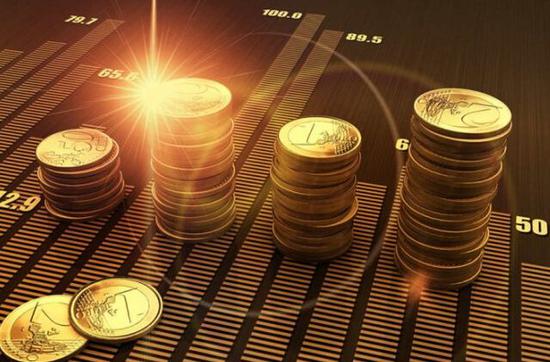Article/Liu Xuezhi, columnist of Sina Financial Opinion Leader Column (WeChat official account kopleader)
The real estate policy has not been relaxed, but it is not impossible to relax. With the extension of strict policy control, the wait-and-see mood in the real estate market has formed, and the property market has cooled.
In the third quarter of this year, the economic growth rate dropped to 6.5%. In October, the manufacturing industry, non manufacturing industry and comprehensive PMI all declined significantly, indicating that demand has weakened significantly and downward pressure still exists in the future economic operation. At the end of this year and the beginning of next year, the export growth rate and the trade surplus of goods may decline significantly. The further slowdown of real estate sales will drive the decline of investment growth rate. The early financial tightening effect appears. The market risk appetite declines and expectations are cautious. Economic growth may experience a slowdown process.
In October, exports denominated in US dollars increased by 15.6% year on year, and exports in the first three quarters increased by 12.2% in total. The current export growth is not bad, mainly for three reasons: First, the current external demand situation remains stable; Second, when the uncertainty of the external environment worsens, there is a characteristic of "rushing for export"; Third, the devaluation of RMB has promoted export growth to a certain extent. Although the current export growth is not poor, the uncertainty of external demand may further increase, and the pressure on export growth will increase significantly in the future. In the environment of rising protectionism and uncertain policies in some developed economies, the momentum of global economic recovery that has lasted for many years has weakened. IMF, OECD and other major institutions have lowered their global economic growth expectations, and the global economy is expected to grow by 3.7% in 2018 and 2019. Risks such as increased geopolitical turbulence in the Middle East have significantly increased the uncertainty of global economic operation. The intensification of trade tensions may weaken the multilateral trading system, which is the main threat to the global economy and will also affect China's export growth. In the first round, the United States imposed tariffs on China of 50 billion US dollars. In the second round, it has already imposed tariffs on goods of 200 billion US dollars. The initial tariff rate was 10%, and it will be raised to 25% after 2019. In the future, it may impose tariffs on additional Chinese goods of 267 billion US dollars. The index of three major orders in the manufacturing industry fell for two consecutive months. The index of new export orders in October fell to 46.9%, far below the boom and bust line, indicating that the future export situation is not optimistic.
Fixed asset investment increased by 5.7% from January to October, rising for two consecutive months, 0.4 percentage points higher than that from January to August. Although the recent investment growth has rebounded slightly, the growth rate is still very low. In the four major investment industries, the slowdown in investment growth is mainly due to the decline in infrastructure and other types of investment. Since the beginning of the year, under the pressure of the slowdown of financial capital expenditure, the limited financing capacity of local governments, as well as the cleaning up of PPP projects and sources of funds, the growth rate of infrastructure investment has declined significantly. From January to September, it only increased by 3.3%, and in October, it will appreciate by 3.7%, but it is still 15.3 percentage points lower than last year. From January to October, the investment in manufacturing industry increased by 9.1%, gradually accelerating since the beginning of the year. From January to October, investment in real estate development increased by 9.7%, maintaining a good growth momentum. It is expected that the investment growth in the fourth quarter will continue to hit the bottom and recover, but the investment growth in the whole year will be lower than last year, and the investment growth in the next year may still be in operation.
Since 2018, the year-on-year growth rate of total retail sales of social consumer goods has dropped to below double digits, hitting a new low since 2003. From January to October, consumption increased by 9.2%, down 1 percentage point from last year. Consumption in the fourth quarter is expected to run smoothly, with a slightly higher growth rate than that in the third quarter, but the growth rate of consumption in the whole year has dropped compared with that in the previous year. Although the growth rate of consumption has fallen back, because investment and exports have a more obvious role in driving economic growth, so the role of consumption in driving economic growth has increased. It is expected that the contribution rate of consumption to economic growth will exceed 75% throughout the year. There are three factors affecting consumption growth. First, the real estate policy was tightened. From January to October, the sales area of commercial housing only increased by 2.2% year on year, which continued to decline, and will continue to affect the subsequent growth of housing related consumption of building materials, furniture and household appliances. Second, with the increase of car ownership and the withdrawal of relevant stimulus policies, auto consumption has been growing negatively for six consecutive months, and the growth rates in September and October were only - 7.1% and - 6.4%. The growth rate of auto consumption has slowed down, which is a drag on the overall consumption growth. Third, in recent years, high housing prices have led to the increase of leverage in the residential sector, which has suppressed the consumption capacity, forming an obvious crowding out effect.
At the meeting of the Political Bureau of the CPC Central Committee held on October 31, it was pointed out that the current economic operation is stable with changes, the downward pressure on the economy has increased, some enterprises have more difficulties in operation, and the long-term accumulated risks and hidden dangers have been exposed. It is required to implement a positive fiscal policy and a sound monetary policy, do a good job in stabilizing employment, finance, foreign trade, foreign capital, investment and expectations, effectively respond to changes in the external economic environment, and ensure the stable operation of the economy. There is still considerable room for policy tools to support China's economy to maintain stable growth in a more volatile global economic environment. It is expected that the macro policies will be more active from the end of this year to the beginning of next year, and the policy focus will play a greater role in expanding domestic demand and structural adjustment, so as to effectively deal with the risk of weakening internal and external demand. The next step will be to make up for weaknesses as the key task of deepening the supply side structural reform. We will strengthen efforts to address weaknesses in infrastructure, enhance innovation, develop new drivers, break through institutional barriers to capacity reduction, reduce enterprise costs, and implement the rural revitalization strategy.
With the support of active policies, the growth rate of infrastructure investment is expected to rebound in the coming months, but the annual growth rate will be significantly lower than last year. After August, the macro policy tends to be positive, focusing on promoting infrastructure investment and ensuring the capital demand of financing platform companies and key investment projects. Recently, the National Development and Reform Commission has intensively approved several high-speed railway and ultra-high voltage projects. The implementation progress of infrastructure projects will be significantly accelerated, and infrastructure investment will start to "step on the accelerator". As of the third quarter, the cumulative number of PPP project management library projects was 8289, with an investment of 12.3 trillion yuan. Both the number of projects and the amount of investment have increased significantly. The top three new projects in the third quarter are municipal engineering, ecological construction and environmental protection, and transportation. The loose policy may further increase the debt pressure and leverage risk, so the policy stimulus should be more appropriate. The growth rate of infrastructure investment may rebound in the future, but it is difficult to reach the high growth rate of last year.
Macro policies focus on continuously expanding domestic demand and focus on expanding consumption demand, but it is difficult to stimulate rapid consumption growth. This year, policies to promote opening up, increase imports, and improve consumer welfare have been introduced frequently and continuously released, which will boost consumption. Reducing and abolishing import tariffs on some consumer goods, and keeping the consumer end at home by expanding imports will promote consumption growth. The import tariffs on finished vehicles and parts were significantly lowered, which will play a positive role in the growth of automobile consumption in the future. The reform of individual income tax has been steadily promoted, the threshold has been raised, and special additional deductions such as children's education expenditure, continuing education expenditure, serious illness medical expenditure, housing loan interest and housing rent have been increased for the first time, which will significantly reduce the tax burden of the lower middle income groups in China and help improve the consumption capacity of residents. China is in the transition period of economic structure, and the growth momentum is gradually transforming from investment to consumption. The State Council's newly issued Several Opinions on Improving the Consumption Promotion System and Mechanism to Further Stimulate the Consumption Potential of Residents will give greater impetus to the consumption transition. However, with the gradual implementation of policies and the increasing income of urban and rural residents in the future, there is still much room and potential for the growth of consumption demand, which needs to be gradually released.
The real estate policy has not been relaxed, but it is not impossible to relax. With the extension of strict policy control, the wait-and-see mood in the real estate market has formed, and the property market has cooled. Development enterprises are generally restricted by funds, and they are pessimistic about the future profit space of the industry. The stock land inventory has become a precipitation cost, the willingness to replenish the inventory has weakened, and the enthusiasm for land acquisition is not high, and there may be more underauctions. At present, the real estate policy has not been relaxed, and there is great uncertainty about the direction of next year. Since house prices are already high, there is no objective condition for full liberalization in order to prevent asset bubble risks. However, if the task of controlling housing prices achieves the expected effect, it may provide space for some policy relaxation after the second quarter of next year. Real estate enterprises tend to be cautious in land acquisition, leading to a decline in land market activity. The important factor affecting whether the real estate policy can be relaxed is infrastructure. If the positive policies promote the infrastructure investment and stabilize the economic growth, the real estate policy will be difficult to be significantly liberalized; If the infrastructure investment is still low, which will affect the further slowdown of economic growth, it is possible that the real estate policy will be relaxed next year.
(The author of this article introduces: senior researcher of Bank of Communications Financial Research Center.)

